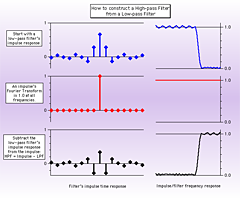


The flow rate was set at 1 ml/min, and the fraction size was 1 ml. The same sodium phosphate buffer with 200 m m NaCl was the running buffer for the Superdex 75 column (2.6 × 30 cm). After sample loading the Q column was connected to an AKTA system (GE Healthcare), being further washed with 5 bed volumes of phosphate buffer containing 100 m m NaCl before the protein elution with 20 bed volumes of 100–350 m m NaCl gradient. Fractions from the nickel column were diluted 2-fold with the salt-free phosphate buffer before loading onto the Q column using a peristaltic pump. One or two 5-ml HiTrap Q columns was(were) equilibrated with 50 m m sodium phosphate, pH 7.8, 10% glycerol, 5 m m 2-mercaptoethanol, 0.5 m m CaCl 2, 2 μ m FMN, and 0.25 m m phenylmethylsulfonyl fluoride. Some side fractions did need to be further purified through an anion exchange column prior to the S75 column. The peak fractions were often in good purity and, once being concentrated to a small volume, could be directly loaded onto a S75 column. The protein elution was achieved by 10 bed volumes of 20–150 m m imidazole gradient. After sample loading the column was washed with 5 bed volumes of the same buffer containing 20 m m imidazole. The wild-type FMN domain protein bound to the nickel column often showed a blue color due to its air-stable semiquinone, whereas the ΔG810 mutant FMN domain exhibited a bright orange color. The cell-free extract obtained after a 1-h ultracentrifugation at 100,000 × g was loaded onto the nickel column.
#Exponential curve fitting igor pro plus
The same buffer plus 1 μg/ml each of pepstatin A and leupeptin was used for cell resuspension before the cell rupture through a microfluidizer at a pressure of 18,000 p.s.i. The buffer for equilibrating the Ni-Sepharose column was 50 m m sodium phosphate, pH 7.8, 10% glycerol, 5 m m 2-mercaptoethanol, 0.5 m m CaCl 2, 0.25 m m phenylmethylsulfonyl fluoride, 2 μ m FMN, and 200 m m NaCl. The FMN domain protein was purified through three column steps: Ni-Sepharose, HiTrap Q anion exchange, and Superdex 75 gel filtration columns (GE Healthcare). ) proteins were adopted for the mutant proteins. These results indicate that the FMN domain in ΔG810 is locked in a unique conformation that is no longer sensitive to calmodulin binding and resembles the “on” output state of the calmodulin-bound wild-type nNOS with respect to the cytochrome c reduction activity. In addition, calmodulin binding to ΔG810 does not result in a large increase in FMN fluorescence as in wild-type nNOS. However, unlike the wild-type enzyme, the cytochrome c reductase activity of ΔG810 is insensitive to calmodulin binding. ΔG810 exhibits lower NO synthase activity but normal levels of cytochrome c reductase activity. As expected, the ox/sq redox potential now is lower than the sq/hq couple. We have deleted residue Gly-810 from the FMN binding loop in neuronal NOS (nNOS) to give ΔG810 so that the shorter binding loop mimics that in cytochrome P450BM3. This difference is due to an extra Gly residue found in the FMN binding loop in NOS compared with P450BM3. Like NOS, cytochrome P450BM3 has the FAD/FMN reductase fused to the C-terminal end of the heme domain, but in P450BM3 the ox/sq and sq/hq redox couples are reversed, so it is the sq that transfers electrons to the heme. In NOS and microsomal cytochrome P450 reductase the sq/hq redox potential is lower than that of the ox/sq couple, and hence it is the hq form of FMN that delivers electrons to the heme. In nitric-oxide synthase (NOS) the FMN can exist as the fully oxidized (ox), the one-electron reduced semiquinone (sq), or the two-electron fully reduced hydroquinone (hq). Glycobiology and Extracellular Matrices.


 0 kommentar(er)
0 kommentar(er)
